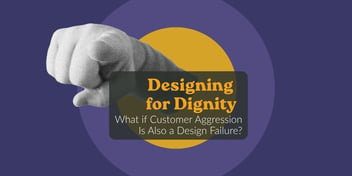Ask yourself this: How can a workplace be called safe if it breeds anxiety, isolation, or burnout? It’s a fundamental contradiction that many organisations still tolerate, often because psychosocial safety remains misunderstood or sidelined. WorkSafe New Zealand’s new guidelines for managing psychosocial risks at work challenges this complacency.
This is not about ticking boxes or corporate feel-good initiatives. It’s about recognising that the mental and emotional health of your workforce shapes everything, from productivity to innovation, turnover to reputation. Yet, here is the rub: while WorkSafe frames psychosocial risks as any other workplace hazards, it also reveals how far most systems still have to go.
As stress-related claims continue to rise, and as mental health becomes one of the most cited reasons for sick leave and disengagement, organisations can no longer afford to treat wellbeing as an afterthought. A safe workplace is not only one where people avoid physical harm. It’s one where they are mentally supported, respected, and empowered to thrive.
Get fresh H&S insights weekly
WorkSafe’s Report
The report lays out a practical framework for identifying and managing the factors that erode psychological health at work, things like unmanageable workloads, poor job control, bullying, or weak leadership. It reframes these not as individual problems, but as organisational hazards that can and should be managed just like any other risk to health and safety.
This reframing is important. For too long, psychosocial harm has been positioned as a personal failing or a matter of “resilience”. The idea that workers should “toughen up” or “leave their problems at the door” still lingers in many cultures. This report sets out to name the conditions that contribute to harm, and to place responsibility with those who shape those conditions.
The guidelines also shifts responsibility away from individuals. Psychosocial risks are not a private problem; they are organisational design issues. Aligning with ISO 45003, the report calls for systems thinking: leaders must build environments that do not just react to crises, but prevent them.
Rethinking Systems for Psychosocial Safety
Just as we would never expect someone to “resilience” their way through a physically unsafe environment, we can no longer expect individuals to carry the burden of toxic systems. Recognising these risks as structural, and treatable, marks a crucial turning point.
It’s not enough to offer mental health days or post motivational quotes in the break room. True safety means interrogating the systems that drive stress and harm in the first place. That might mean redesigning job roles, rethinking performance targets, or investing in leadership capability. It will almost certainly mean making some uncomfortable changes.
The implications go deeper than policy. When psychosocial safety is treated as a legitimate workplace hazard, it forces organisations to embed mental health into the heart of their health and safety strategy. It moves psychological wellbeing from the margins to the core of risk management. For leaders, this means rethinking how success is defined and supported. It means budgeting for people, not just operations. And it means embedding accountability, not just offering EAPs and calling it a day.
The Global Landscape of Psychosocial Risk Management
The New Zealand experience reflects a worldwide reckoning. Australia’s tougher laws have already resulted in penalties for companies that fail to manage psychosocial risks effectively. Europe’s regulatory frameworks require documented risk assessments for mental health hazards. Global investors are increasingly factoring psychosocial safety into ESG ratings, directly affecting company valuations. These developments show that psychosocial safety is no longer an optional conversation. It’s a non-negotiable business imperative with tangible financial and reputational consequences.
Across markets, we’re seeing a convergence: pressure from regulators, employees, and the public is reshaping expectations of what a responsible employer looks like. Boards are being asked tougher questions. Investors are looking for assurance that organisations can manage not just financial risk, but human risk too.
Ignoring psychosocial risks is not just a moral failure; it’s a strategic risk. Organisations that fail to act will face higher turnover, litigation, and erosion of trust. Those who lead will find competitive advantage in healthier, more engaged workforces.
What Organisations Everywhere Can Learn (and Do)
Progress will require more than policies, it requires cultural transformation rooted in transparency and accountability. Organisations need to start measuring the real culture, not just compliance metrics. Leaders must be trained to spot psychosocial risks with the same rigor as physical ones and to act decisively.
It’s also about listening. Creating safe mechanisms for feedback. Understanding how different people experience work. Intersectionality matters. Psychosocial harm is not experienced equally, and effective responses need to reflect that nuance.
Crucially, psychosocial safety cannot be a side project. It must be embedded into health and safety systems, business strategy, and leadership development. This integration is difficult but non-negotiable. You cannot separate people’s wellbeing from the systems that surround them. Nor can you lead effectively without understanding the human impact of your decisions.
The WorkSafe report opens a vital conversation. But the real challenge is not to wait for perfect frameworks: it’s about urgency and humility. We need workplaces where safety means more than avoiding injury, where people can bring their whole selves to work without fear of harm.
This is the future of work. And it starts now.
.png)



.png?width=352&name=Psychosocial%20Safety%20(2).png)

.png?width=352&name=Rethinking%20Health%20%26%20Safety%20in%20NZ%20(1).png)
